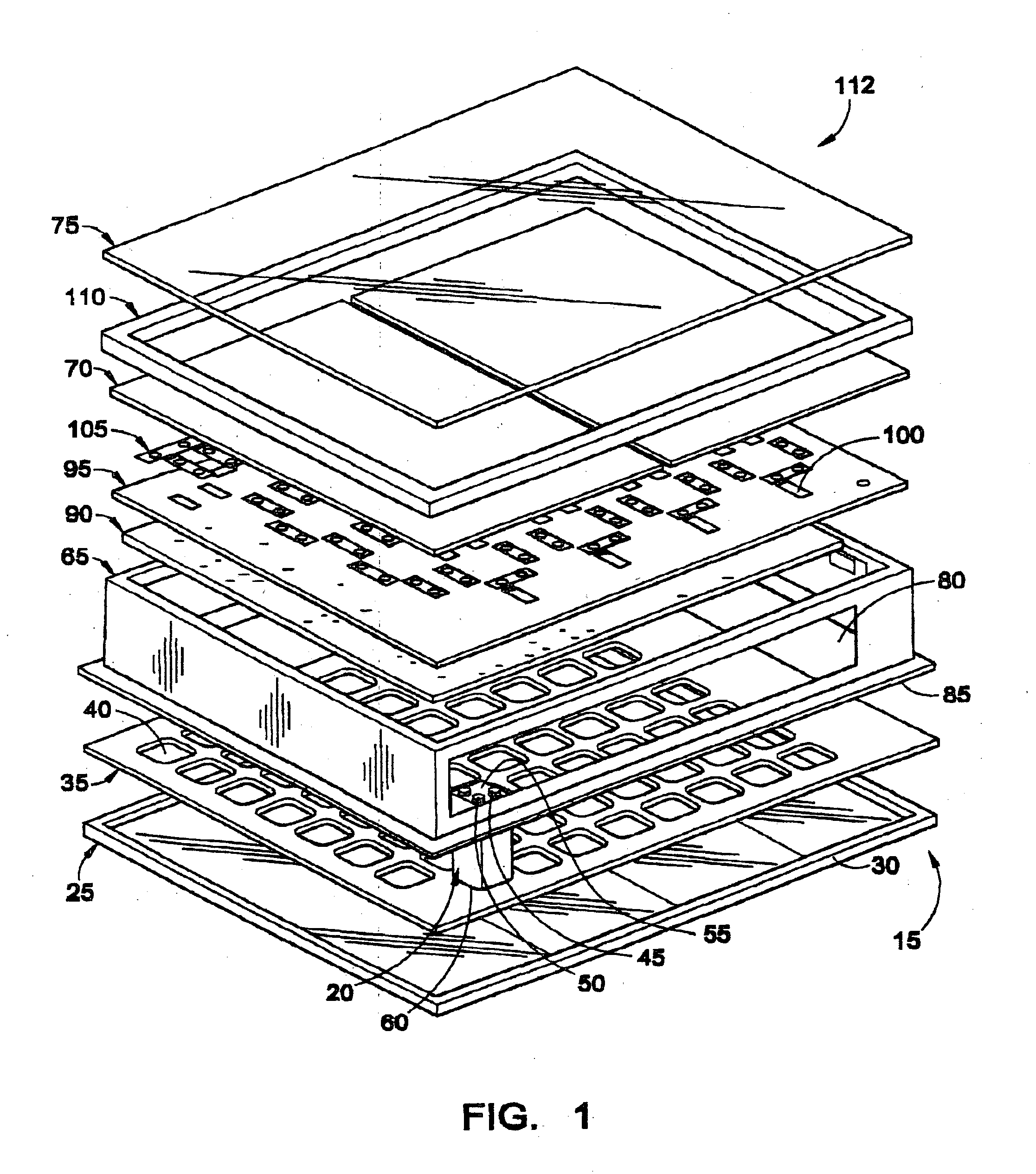High-Power Ultracapacitor Energy Storage Pack and Method of Use
a high-power ultracapacitor and energy storage technology, applied in fixed capacitors, variable capacitor details, fixed capacitors, etc., can solve the problems of limited deep-cycle battery life, battery pack replacement at a high cost one or more, and battery power limitation, so as to protect against corrosion and thread connection loosening, the effect of enhancing electrical and thermal conductivity
- Summary
- Abstract
- Description
- Claims
- Application Information
AI Technical Summary
Benefits of technology
Problems solved by technology
Method used
Image
Examples
Embodiment Construction
[0035] With reference to FIGS. 1 and 2, an embodiment of an ultracapacitor energy storage cell pack 10 will now be described. FIG. 1 illustrates an exploded view of an embodiment of a half module 15 of the ultracapacitor energy storage cell pack 10. FIG. 2 illustrates an embodiment of an assembled ultracapacitor energy storage cell pack module 10, which includes two half modules 15 fastened together. Although each half module 15 preferably includes eighty ultracapacitors 20, each half module may have other numbers of ultracapacitors 20. Further, the ultracapacitor pack 10 may have other numbers of modules 15 besides a pair (e.g., 1, 3, 4, etc.).
[0036] The ultracapacitor pack 10 is shown in exploded view in FIG. 1 to illustrate the different levels in the half module 15 that are added during assembly of the half module 15. Each of these levels will now be described in turn below followed by a description of the assembly process.
[0037] An aluminum base plate 25 forms a bottom or inn...
PUM
 Login to View More
Login to View More Abstract
Description
Claims
Application Information
 Login to View More
Login to View More - R&D
- Intellectual Property
- Life Sciences
- Materials
- Tech Scout
- Unparalleled Data Quality
- Higher Quality Content
- 60% Fewer Hallucinations
Browse by: Latest US Patents, China's latest patents, Technical Efficacy Thesaurus, Application Domain, Technology Topic, Popular Technical Reports.
© 2025 PatSnap. All rights reserved.Legal|Privacy policy|Modern Slavery Act Transparency Statement|Sitemap|About US| Contact US: help@patsnap.com



